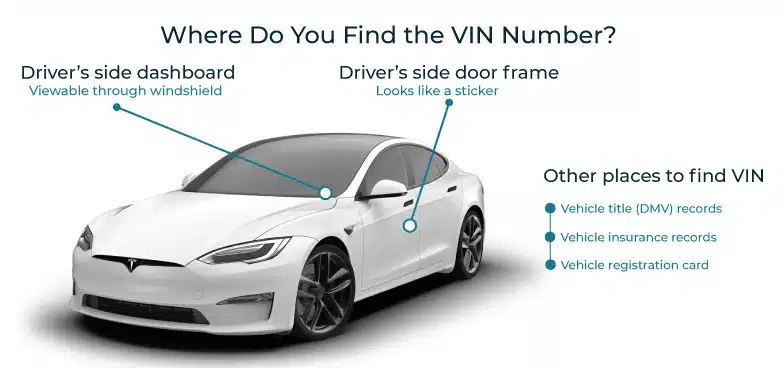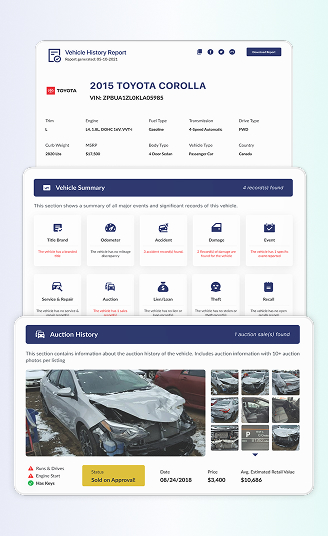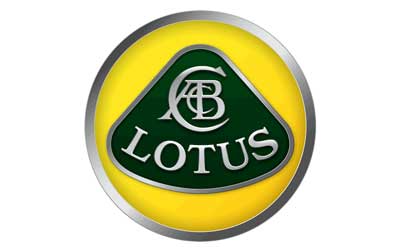
Lotus Recall Check
Attention Lotus owners! Don’t leave your safety to chance. Detailed Vehicle History offers Lotus Recall Checks that enable you to check for any outstanding recalls associated with your vehicle.
This powerful tool helps you stay ahead of any potential safety hazards and take prompt action to get them fixed. Keep yourself and your passengers safe on the road and run a Lotus Recall Check today.
What is a Lotus Recall?
In plain terms, a Lotus recall is a promise to make things right. If testing, owner complaints, or government investigations show that a Lotus part could fail in a way that affects safety, or breaks federal rules, Lotus must file a report, alert NHTSA, and repair or replace the part at no cost to you.
Lotus models are special, but not exempt: past recalls have addressed steering-column collapse performance, oil-line ruptures, and even label errors. Geely’s ownership doesn’t change your rights or the process; it just defines who funds the fix.
Why You Should Check the Lotus Recall History?
Because safety repairs are free, and some issues are high-stakes, think fire risk from oil leaks or crash-protection parts that don’t meet spec.
Skipping a recall can affect insurance, resale value, and, honestly, the peace of mind that lets you enjoy the car the way Lotus intended. The NHTSA database also logs noncompliance recalls (labels, test-standard items), not just obvious mechanical faults.
Below are some extra reasons why you should check the recall:
Avoid Unsafe Lotus
Any vehicle can develop safety problems, and Lotus is no exception. A quick recall check tells you if your car has any outstanding campaigns that affect safety. If it does, schedule the no-cost fix and keep the service record. It’s a simple step that helps make sure your Lotus is safe for you and your passengers.
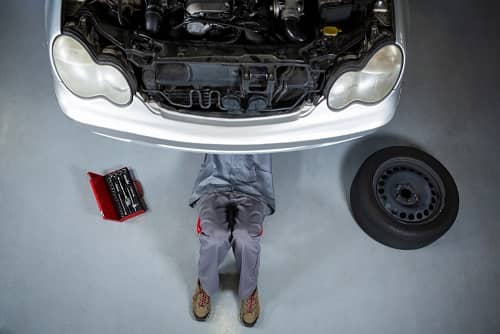

Compliance
Run a recall check before you commit. By law, automakers must alert owners to safety defects and provide free repairs. Confirming your Lotus’s recall status helps you avoid paperwork problems, supports insurance and financing, and protects resale value. A Lotus with open recalls may not meet federal safety standards, which can make ownership and future sale more complicated.
Avoid Out-of-Pocket Repair Bills
Run a Lotus recall check before you buy or sell. Safety defects are fixed free by the manufacturer, which can save you thousands compared to paying for similar repairs yourself. Giving you peace of mind.

How to Run Lotus Recalls
Discovering your Lotus recall report is just a minute away! Follow these easy steps to get the information you need quickly and effortlessly:

Find your Lotus VIN
You'll need your Vehicle Identification Number (VIN) ready. Look on the driver’s side dashboard (through the windshield) or the driver’s door jamb. You can also find the VIN on your title, registration, or insurance card. Our lookup works for classic and current Lotus models.


Enter your details
Type your VIN in the form above. No VIN handy? Use your license plate number instead.


Receive Your Lotus Recall Report
We’ll show any open Lotus recalls immediately, plus key details and next steps. If a recall is listed, book the free repair at an authorized Lotus dealer for peace of mind.
What is on the Lotus Recall Check?
In your Detailed Vehicle History, the Lotus recall check lists any safety recalls tied to your vehicle. Each entry shows the announcement date, the affected component, and the recommended next steps.
Explore the details below for more information:
- Date of recalls: Shows when Lotus and NHTSA issued the recall, helping you judge urgency and confirm our data is timely, accurate, and decision-ready.
- Affected Component: Identifies the exact Lotus part involved, so you know what’s wrong and can discuss repairs confidently with any dealer or mechanic.
- Remedy: Details the manufacturer’s free fix. You’ll see where to go and what’s covered, reducing hassle and avoiding out-of-pocket surprises.
- Next step for the affected Lotus: Confirm if your Lotus is listed under the recall and schedule repairs. With a complete Vehicle Report, you’ll also see past recalls and repair status.
A Lotus vehicle history report also includes the vehicle summary and details, title brand check, mileage records, accident records & damage verification, and more. Review the records below:
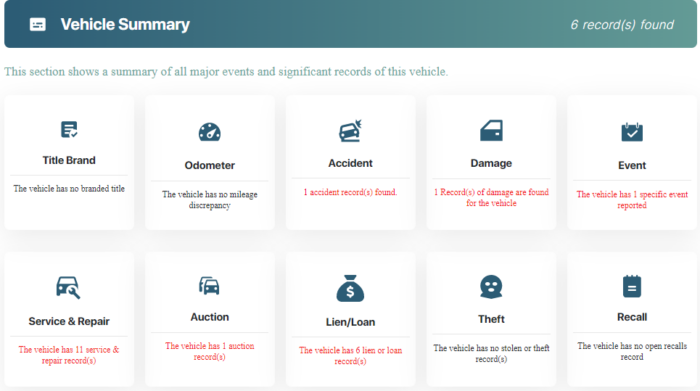
Vehicle Summary & Details
Basic identity of your Lotus (model, trim, year, engine, build plant). It’s your quick snapshot to confirm the car is exactly what it claims to be. Useful when shopping for a used
Title Brand Check
Flags serious legal statuses (salvage, rebuilt, flood). A branded title can affect whether a recall remedy is possible or how it’s handled.
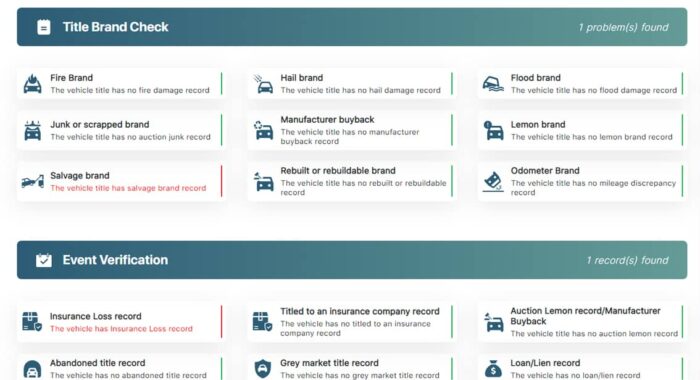

Mileage Records
Odometer readings collected across inspections, registrations, and service visits. For Lotus cars (where low miles can be a badge of honor), consistent mileage matters. Big gaps or a sudden drop could mean an error or something worse.
Accident Records & Damage Verification
Discover if your Lotus has been involved in crash accidents. See the crash reports, total loss, and structural damage markers that can interact with recall repairs.

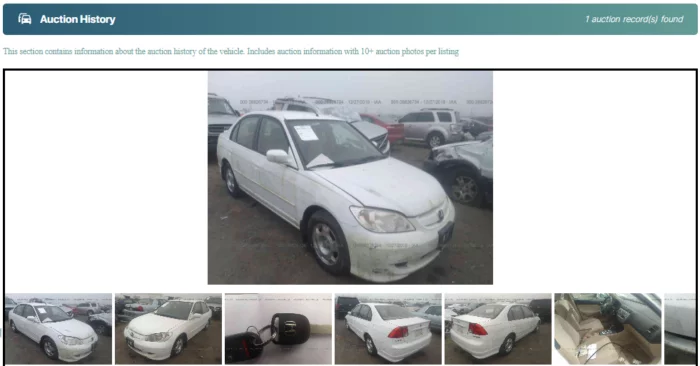
Auction History
Did your Lotus pass through wholesale auctions? You’ll see dates, venues, and sometimes condition announcements. Nothing wrong with auctions per se, but rapid flips can hide unfinished recall work or missing paperwork.
Lien/Loan Records
Active liens or releases linked to your Lotus. This matters for recalls and sales. A surprise lien can derail the title transfer after you’ve done the free safety repair. If you’re selling, clear the lien first; if you’re buying, make sure the lienholder is satisfied before you bank on that “all recalls completed” note in the ad. Paperwork saves headaches.
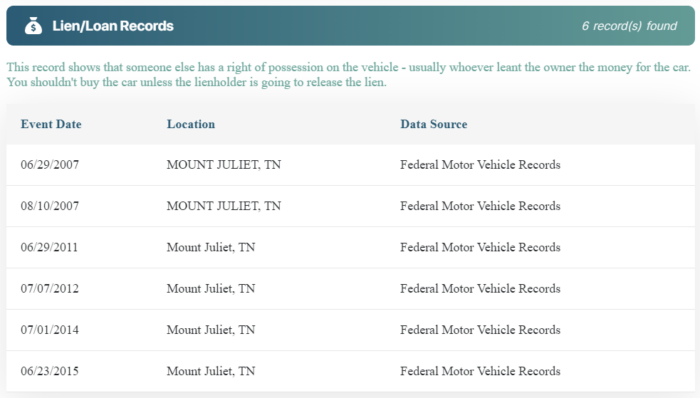
Common Issues Leading to the Lotus Recall
Lotus vehicles have faced several recalls due to safety and reliability concerns. Common issues include the oil-cooler plumbing failures.
When checking for a Lotus, several factors come into play. Here’s a breakdown of elements that could affect your Lotus and lead to a recall:
Oil-cooler plumbing failures
Elise/Exige 2005–2011, Evora 2011
The oil-cooler hose or its end fittings could loosen or chafe, dump oil, and make a mess where you least want it, on tires, brakes, or hot engine parts. Drivers might see an oil light, puddles, or a trail on the road.
The risk? Loss of control and, in a worst case, fire. Lotus’s remedy was a rectification kit: revised hose assemblies and modified connectors. NHTSA campaigns covered several waves: 11V-510 (Elise/Exige), 13V-041 (extension), and 14V-280 (further expansion, including some Evora). Owner mailings for the 14V-280 wave began late September 2014; around 860 U.S. cars were in that batch. Dealers perform the fix for free.
The passenger's toe board is too flexible
Evora 400, 2017–2018; FMVSS 208
Crash testing found the front passenger toe-board didn’t have the designed stiffness. In a crash with an unbelted occupant, a knee could strike a rigid structure and increase injury risk. Lotus called this a non-compliance with FMVSS 208 and launched recall 19V-263 (campaign 2019/01R).
The remedy included strengthening the toe-board per a Lotus service bulletin; Lotus told dealers to contact owners, even while clarifying the risk concerns under unbelted testing conditions. NHTSA’s file lists 2017–2018 Evora, with production dates August 2016 to December 2018 (2017MY 328 cars, 2018MY 86). Owner letters were issued; repairs are free.
Steering column cartridge screw torque
Evora 2018
On some 2018 Evoras, the screw in the steering-column “collapse” cartridge wasn’t torqued correctly at the supplier. Day-to-day driving felt normal, but in a frontal crash, the column might not collapse as intended, raising injury risk.
Lotus told dealers to re-torque/repair the assembly (class 1 safety recall 2018/01R; NHTSA 18V-781). Production dates affected were roughly April–October 2018, and U.S. owner/dealer notices went out with the on-car procedure and a special tool.
Seatbelts that could lock or be hard to unbuckle
Emira 2022; Australia
Early Emira builds had a seat-belt locking mechanism assembled so it could engage at the wrong point. That can clamp too tightly across the chest/waist, restrict movement and visibility, and take extra effort to unbuckle, bad news in an emergency exit. Lotus Australia recalled 26 units (campaign 2023/01R) and replaced the belts free.
Windscreen wipers are too slow in heavy rain
Emira 2022–2023; Australia
Because of a software issue, the wipers could run at half speed. In a downpour, that’s a visibility risk. Lotus’s fix is to replace the wiper motor assembly; 77 vehicles were listed in the Australian recall campaign 2023/02R.
A-pillar trim could detach with side-curtain airbags
Emira 2022–2023; Australia
If the side-curtain airbags deploy, incorrectly fitted A-pillar trim could pop off and send plastic fragments into the cabin. The recall (campaign 2023/03R) covered 102 cars; dealers fit revised trim/tethers free of charge.
Brake master cylinder compatibility
Elise 2016; manufacturer/EU
Lotus flagged an Elise brake master-cylinder issue in 2016 (campaign 2016/01R). The concern: incompatible parts could lead to brake blockage and loss of braking force. The manufacturer’s campaign called for replacing the master cylinder on affected VINs. (Note: this was a Lotus campaign in Europe; not every market mirrors U.S. NHTSA filings.)
Fuel-rail modification on Elise 2ZR
2019; manufacturer/EU
A 2019 Elise 2ZR campaign (2019/02R) addressed fuel-rail hardware. The hazard is straightforward: fuel leaks raise fire risk. Dealers replaced/modified parts as specified by Lotus. (Again, a manufacturer campaign outside the U.S.)
Understanding the Lotus Recall Process
NHTSA reviews safety complaints and, when a defect is confirmed, the automaker must issue a recall under NHTSA oversight. You can then check your Lotus by VIN and get a free remedy at a dealer.
Discover the full breakdown of the Lotus Recall Process below:
Report the Problem
Notice something unsafe on your Lotus? File a complaint with NHTSA. Your report is logged, compared across VINs, and helps trigger formal investigations.
Investigation
Once a complaint is submitted, the NHTSA follows a multi-step process to determine whether a recall is necessary.
- Screening: NHTSA’s Office of Defects Investigation reviews patterns in complaints and other data.
- Analysis: Defect petitions are reviewed in detail. If denied, the decision and reasoning are publicly posted in the Federal Register.
- Investigate the Issues: When Lotus’s safety concerns are confirmed, NHTSA launches a formal investigation, ending in either no defect or a recall.
- Recall Management: NHTSA ensures owners are notified and monitors repair completion rates.
Recalls
A safety recall means the manufacturer must inform owners and correct the problem. Recalls happen when a vehicle or component is unsafe or doesn’t meet regulations. Most are voluntary, and manufacturers are required to repair, replace, refund, or buy back the affected vehicle.
How Lotus Vehicle Recalls Are Handled
When a safety problem is found on a Lotus, three groups work together: the manufacturer, NHTSA, and you, the owner.
This teamwork finds defects, informs drivers, and makes sure fixes are completed to keep your vehicle safe and legal. Below is a detailed breakdown of each role
Automaker Role
Finds the defect, tells NHTSA via a Part 573 report, identifies affected cars, and sets the free fix. Lotus sends owner letters, instructs dealers, and repairs or replaces parts at no cost (even out of warranty) because safety defects aren’t normal wear.
NHTSA’s Role
NHTSA monitors safety, investigates patterns, and reviews Lotus’s filings and notifications. It posts the official campaign number, tracks how fast owners are notified, whether the remedy works, and how many cars get fixed, pushing for updates if parts or software aren’t ready.
Your Role as the Vehicle Owner
Your role is to check and act. First, check your VIN, read the letter, and book the repair with a Lotus dealer. Bring the letter, VIN, and registration. If parts are delayed, ask for timing, contact Lotus customer service, and escalate to NHTSA if needed. Obey any “do not drive” instruction and ask about towing/loaners. If you previously paid for the fix, request reimbursement.
The faster you act, the sooner your Lotus is back to what it does best: making every corner count.
Get Lotus Window Sticker by VIN
A Lotus Window Sticker turns guesswork into facts. Verify the trim, transmission, brake package, forged wheels, aero, audio, and driver-assist content your listing claims, plus original MSRP.
Pair it with your recall report for a complete story that builds trust with buyers and lenders. Fewer “Is that standard?” questions. More confidence. Better outcomes.
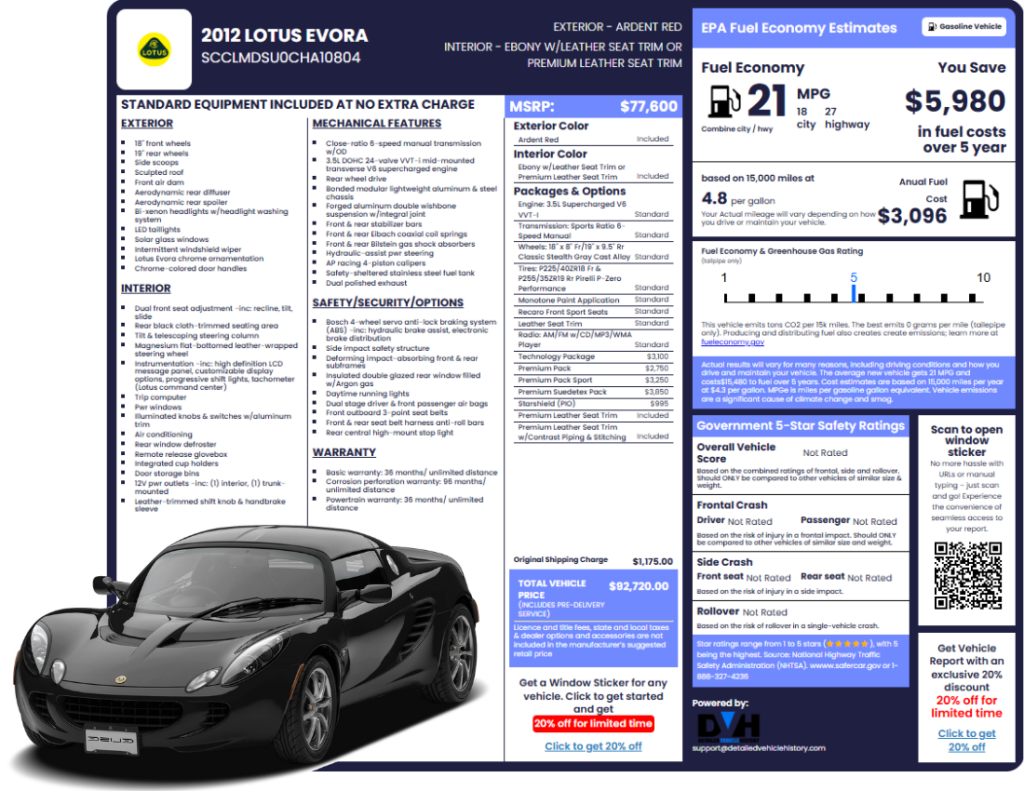
Why Use Detailed Vehicle History to Check Lotus Recall?
Recalls are only part of the story. Our Lotus VIN or plate lookup pairs open campaigns with the context buyers and owners need: title brands, mileage trails, ownership changes, lien status, theft checks, accident/damage entries, prior listings, and even auction photos when available. Whether it’s an Elise, Exige, Evora, or Emira, you’ll verify spec, spot red flags, and book any free recall fix with confidence, without juggling five different tools.
Recall Check For Others Manufacturers
FAQ about Lotus Recalls Check
Are Lotus recall repairs really free, even out of warranty?
Yes. Safety-recall remedies must be provided without charge; the law outlines repair/replace/refund paths and a reimbursement plan for owners who already paid shortly before the recall. The free-remedy duty generally lasts 15 years from the first sale.
How do I check Lotus recalls by VIN or by license plate?
You’ve got two easy paths with Detailed Vehicle History:
- A) License plate lookup (fastest if you don’t have the VIN)
Enter the Lotus’s plate and state in the Detailed Vehicle History plate lookup. We convert the plate to the VIN and generate a report that flags any outstanding safety recalls on that specific car. Perfect for used-car shopping, so you don’t inherit unresolved risks. - B) VIN recall check (most precise)
- Find your 17-character VIN (driver’s side dash at the windshield or the door jamb).
- Go to Detailed Vehicle History and open the Recall Check.
- Enter the VIN (double-check for typos) and submit.
- Review the results for any open recalls, affected parts, and remedy notes.
- If a recall appears, call your Lotus retailer to schedule the free repair and bring your letter/registration.
Either route gives you a clear recall status so you can act quickly and drive more safely.
Which Lotus models have recent recalls?
As of October 2025, examples include Emira (2022–2023) overseas for seatbelts, wiper software, and A-pillar trim, plus Evora 400 (USA, 2019) for the passenger toe-board, and the expanded oil-cooler hose campaigns on Elise/Exige/Evora.
Can I drive my Lotus with an open recall?
It depends on the risk. Some issues allow normal driving while you book the fix; others may come with “do not drive” or “avoid heavy rain” guidance. Follow the letter and schedule promptly.
Will Lotus reimburse me if I have already paid for the repair?
Recalls include a reimbursement plan for eligible repairs made shortly before the campaign. Keep your receipts and ask the dealer or Lotus customer care how to file.
Do Lotus recalls expire?
The recall record doesn’t “expire,” but the no-charge remedy generally ends after 15 years from the first retail sale. You can still ask a dealer about parts or a paid repair if needed.
Can a dealer refuse to fix a Lotus recall?
They shouldn’t. If parts are back-ordered, you may need to wait, but the repair itself must be free. If you hit a wall, escalate to Lotus and NHTSA’s hotline.
How do recalls affect a Lotus’s resale value?
Open recalls can delay a sale, and some buyers will insist on closure first. Use the VIN tool and get the remedy done; it’s free and recorded against the VIN, which helps future transactions. (This is standard buyer practice supported by NHTSA’s VIN system.)
Is Lotus discontinued? Who handles recalls now?
No. Lotus continues under Geely’s majority ownership; Lotus Technology was listed on Nasdaq in 2024. Authorized retailers and the brand’s U.S. entity handle recall remedies per campaign instructions.
What if there’s no fix yet (parts/software pending)?
You’ll get interim guidance and a follow-up when parts arrive. NHTSA can require acceleration if the risk is high and the supply can be broadened. Stay in touch with your retailer and recheck your VIN.

